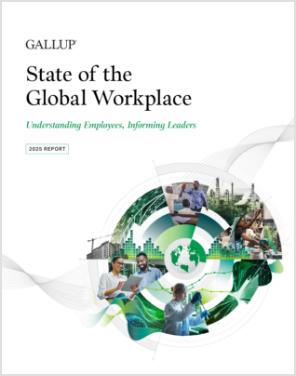Story Highlights
- Southeast Asia faces high turnover risk due to low engagement
- Engagement drives performance, wellbeing and retention
- Great jobs and experience are key for engagement in the region
At face value, the fact that employee engagement in Southeast Asia increased in Gallup’s latest report and is now three percentage points higher than the global average looks like a win for the region’s employers.
But if we look more closely at regional data from the State of the Global Workplace 2023 Report, the percentage of quiet quitters (also known as not engaged employees) in Southeast Asia has also increased and is now nine points higher than the global average.
Sixty-eight percent of employees in Southeast Asia are just filling a seat and watching the clock. This group puts in the minimum effort required and is psychologically disconnected from their employer. And, in spite of being minimally productive, they are more likely than engaged workers to be stressed and experience burnout because of these feelings of disconnection.
Even more problematic is the 6% of employees in the region who Gallup categorizes as “loud quitters” due to being actively disengaged. These workers take actions that directly harm their organizations, undercutting goals and opposing leaders.

The large segment of quiet and loud quitters (74%) in Southeast Asia provides context for another finding in the report: The percentage of workers in this region who feel now is a good time to find a job in their area increased by 22 points in the 2023 report.
These data point toward trouble on the horizon for leaders in this region. If the majority of your employees are disconnected from their work and feel it’s a good time to find a new job, you can expect to see increased turnover and decreased productivity as you attempt to fill the empty seats.
The good news is that identifying the problem leads to a clear solution. If workers across the region feel like it’s a good time to find a job, companies that ensure their organization provides great jobs and an excellent employee experience will come out ahead.
By intentionally intervening and investing in strategies and policies that improve employee engagement, companies can avoid turnover by turning quiet quitters into thriving, engaged employees -- and be an attractive destination for those who do choose to change jobs.
An important nuance is that engagement does not equal happiness or even satisfaction at work. Satisfaction entails basics like pay, benefits and daily experiences of emotions, but true engagement is a worker’s psychological commitment to and feeling of ownership of their work -- factors that drive sustainable high performance. It’s the difference between someone being content at work versus feeling driven to go above and beyond consistently. Engaged workers take ownership of their performance and go the extra mile for their teammates and customers.
Engaged employees aren’t just more productive and profitable. They also have higher wellbeing and lower absenteeism and are less likely to leave your organization.
Given those returns on engagement, it’s especially important to address some of the groups trailing others in engagement in Southeast Asia, as they are critical to the future of the workplace:
- Hybrid and on-site workers are much less likely to be engaged than exclusively remote workers, despite the growing number of hybrid workers in the region -- a trend that will likely continue in the coming years.
- Fewer women than men are engaged at work, a gap that has persisted and widened over the last few years and contrasts the overall global trend in which more women than men are engaged at work. Women are a necessary and beneficial part of the workforce in Southeast Asia -- identifying and meeting their needs at work is critical to retaining them.
- Fewer younger workers than older workers are engaged. Younger workers are the literal future of your workforce, so growing engagement in this population is paramount.
The sooner leaders take action to address engagement in Southeast Asia, the better.
What Leaders Can Do
With organizations facing new, more complex challenges all the time, managers are in the one role positioned perfectly to influence all desirable business outcomes (e.g., retention, productivity, safety). Gallup has found that managers account for up to 70% of the variance in employee engagement on their team -- no other role has that much influence.
To help managers make the most positive impact on their team, start here:
First, rather than expecting your managers to instinctively make the right decisions, provide them with the data and training they need to help them make better decisions and support their team’s engagement. Given the complexities of hybrid and remote teams (for managers and employees alike), organizational leaders should find out how their employees are feeling by asking the right questions. Managers spend much of their time with their team and have unique insights into the challenges their team faces -- let them use that knowledge while training them and their team on how to work effectively in a hybrid environment. Then, give managers the relevant data and trust them to do the right thing for your employees and your business.
Second, remember that managers aren’t immune from engagement struggles at work. Amid the push and pull between employer and employee in establishing hybrid policies and schedules, managers are often caught in the middle -- and they’re feeling the pinch. And when managers struggle, it can have a negative cascading effect on their team. Managers need support and development from their leaders, just like all employees do.
Invest in your managers’ development to boost their engagement, and it will likely inspire the teams they lead, too. Gallup recommends upskilling your managers to embrace a coach-like mindset. Doing this consistently will help create an organizational culture in which employees can thrive, regardless of where they work.
Though, at face value, while the 74% of employees in Southeast Asia who are not engaged or actively disengaged is a troubling statistic, it presents organizational leaders with an immensely valuable opportunity. Shifting even a fraction of these workers into the engaged category would jump-start engagement in the region and help minimize the risk of losing top talent to another organization at a time when so many workers think now is a good time to find a job.
Create a culture where employees can thrive.
- Discover how global employee trends can transform your workplace. Download Gallup’s State of the Global Workplace 2023 Report.
- Partner with Gallup to uncover what your employees need.
- Learn how to lead amid the changing workplace.




